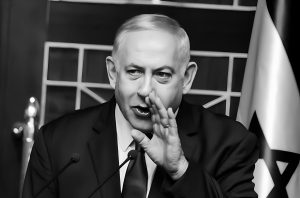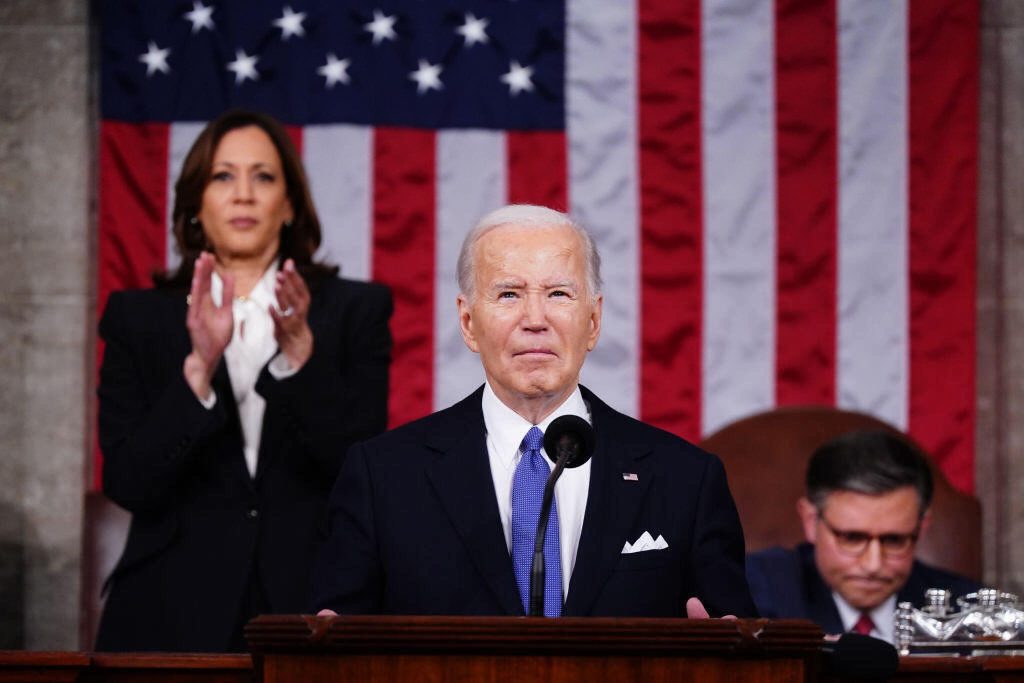
“By this treaty, we are not only seeking to establish freedom from aggression and from the use of force in the North Atlantic community, but we are also actively striving to promote and preserve peace throughout the world. – Harry Truman, 33rd President of the United States
MARCH 21, 2024

More than seven decades since its establishment, the North Atlantic Treaty Organization (NATO) is not only the largest (32 sovereign members), but also historically the most powerful military alliance in the world. From its earliest, yet indirect conceptualization in both the Truman Doctrine of containment and Marshal Plan (European Recovery Program) in the immediate post-World War II era, American leadership has been an integral anchor for the organisation. Traditionally, this role encompassed mainly mobilizing allied countries against communist expansion and aggression of the Soviet Union. However, the shifting contemporary geopolitical and security landscape necessitates NATO to continously venture beyond its traditional defensive military role, into a broader security scope to grapple with a myriad of emerging and evolving security threats. These threats range from state-sponsored terrorism and cyber warfare to the proliferation of weapons of mass destruction, resurgence of regional conflicts, rise of authoritarian regimes, and erosion of democratic norms including in some members of the alliance.
From the beginning, American leadership has been integral to the alliance. Although President Truman’s visionary leadership in establishing NATO as a defensive alliance initially faced scrutiny at home from critics who viewed the idea as another war program, its justification has become increasingly evident over time, with the alliance proving instrumental in, for the most part, stabilizing the world order by keeping peace in Europe and binding the Trans-Atlantic world. Yet, the rapidly evolving security landscape facing the alliance has demanded effective leadership, one which America has strived to play, albeit with a mixed bag of outcomes. Two phases appear to be more distinct, while a third phase, perhaps the most critical of all, is one that is currently evolving, and which will demand a more pragmatic and proactive approach from Washington to steer the alliance into a new era.
During the first phase, the end of the Cold War in which NATO’s deterrence role against Soviet aggression was instrumental, heralded a brief period of uncertainty caused by the removal of the raison d’être for the alliance. However, the instability that emerged from dissolution of former communist states, once again pivoted the role of the alliance in guaranteeing regional security in Europe. In Bosnia and Herzegovina, for example, the dilemma created by the neutrality principle of the United Nations Protection Force, rendered it practically incapable of undertaking an effective peacekeeping mission, an aspect epitomised by its failure to prevent the Srebrenica massacre. NATO on the other hand was equally handicapped by the presence of the UN peacekeeping mission as well as weak leadership occasioned by American leadership paralysis.
Nonetheless, incremental acts of atrocities and dissatisfaction with American response in Bosnia ultimately pushed Washington to adopt a more proactive and assertive role in NATO to create a conducive environment that would force different sides of the conflict into negotiations and accepting a final peace agreement. In 1995, an assertive diplomatic and coercive American military leadership contributed to the negotiation of the Dayton Accord and its subsequent enforcement by a contingent of 60,000 American and NATO forces, finally culminating in relative peace in Bosnia. Success and lessons learnt from Bosnia inspired another spirited NATO intervention in Kosovo in 1999, this time, President Bill Clinton providing strong leadership in galvanizing the alliance to a military intervention, along with a strong bipartisan support in Congress and Senate. Although the crisis in Kosovo posed no immediate threat to NATO members, the quick intervention was largely driven by the need to reinforce credibility to the alliance as a reliable and effective leader in promoting stability and human rights.
The second phase was a historic and perhaps emblemized the strongest show of American leadership in NATO towards addressing a geopolitical and global security threat. Indeed, the al-Qaeda attack on September 11, 2002, triggered what has now been a historic invocation of Article 5 which underscores the commitment of the alliance to the principle of mutual defense –an attack on one is an attack on all. In retrospect, American response to 9/11 has attracted significant criticism from multiple quarters in the foreign policy discourse space who see the aftermath as a botched, damaging, and disastrous response that has contributed to the American decline. That aside, what is not in doubt is that America provided a global leadership collectively through NATO whose members agreed to provide military bases, exchange intelligence, grant overflight rights, as well as deploy NATO’s air patrol aircraft to the US for the purposes of waging the global war on terror. Equally significant, the involvement of NATO provided an alternative interpretation of Article 5 beyond what perhaps the drafters of its constitution had in mind. That is, for purposes of responding to emerging security threats such as terrorism rather than the traditional threats from other state actors with expansionist goals.
As America quickly elevated the threat of global terrorism to its top national security strategy and taking the key role in terms of spending and combat operations, the American leadership for the most part of the post-9/11 era, have found it challenging to consistently articulate the strategic benefit of the alliance at home. However, one binding logic across the Clinton, Bush, and Obama administrations was that preserving NATO was central to American efforts to anchor its influence in Europe and pursue deeper European integration by linking Western and Eastern Europe through liberal democracy and a common security framework– forming the premise for the enlargement of the alliance in 2004. However, this enlargement and America’s formidable military capabilities and substantial defense budget has gradually nurtured a culture of ‘free riding’ within the alliance.
A case in point is Germany which by virtue of not being the key NATO frontline against Russia due to the enlargement, has consistently reduced its defense budget, disbanded some of its brigades, and been reluctant to shore up the new frontlines from Russia’s post-2014 aggressions. In America, frustration with the level of commitment towards the alliance, and calls for burden-sharing has led to very harsh criticisms, including from a sitting US president, Donald Trump, who not only referred to the alliance as being “obsolete,” but also highlighted the ineffectiveness of the alliance against a threat like China, and threatened to withdraw America from NATO. While these threats did not see the light of day, they characterize the third phase of the American leadership in the alliance can be characterised as very challenging.
Yet, despite contestations on how best to measure the success and failures of American leadership in NATO and its implications on Trans-Atlantic and global security in the past, what holds true is that the world is at crossroads. Russia has been emboldened to be more assertive in its pursuit of foreign policy goals especially in Ukraine. While American leadership has been crucial in guiding NATO members to provide military aid to Ukraine, the success is hinged on continuous provision of such aid in a timely manner and of right quantity and capacity. Furthermore, an emergent China perhaps posits the most viable direct threat to America and in extension, NATO through its actions in the South China sea. Still, this threat comes at a time when the world is becoming more precarious, not primarily from the threat of nuclear warfare (which although plausible, is the likely) but from a technology race with potential to radically transform the nature of modern warfare. What will determine if NATO survives for the next seven decades is fundamentally hinged on the ability of the alliance to rally and enhance a deeper sense of Trans-Atlantic solidarity and commitment, to emerge as the most advanced in this technological race.
This has to be the task of the current American administration under Joe Biden as well as subsequent ones. At the moment, priority should be given to restoring trust in American leadership as a token of commitment to its international obligations, more importantly, to NATO. Already, a strong American leadership has been vital in steering the membership of Sweden and Finland to the alliance. Moving forward, this leadership will be tested by how well America will be able to lead members of the alliance to adapt in a shifting security landscape characterized by rapidly developing and deployment of artificial intelligence, quantum computing, and autonomous weapon systems. For the time being, although the foundational democratic principles upon which the alliance was concieved and its successes derived are facing significant resistance, what holds true is that the principles of consensus and mutually assured security remain as important as ever. This alone, provides a strong incentive for a stronger NATO to safeguard the Trans-Atlantic security and contribute to global security.
A curated seletion of FA’s must-read stories.
Written By: SHAGNIK BARMAN
Written By: BERK TUTTUP
Written By: ABBY L’BERT
Written By: BILLY AGWANDA
Written By: HIRA SARWAR
Written By: BATUHAN GUNES
Written By: LEON REED
Written By: DARSHAN GAJJAR

Agwanda is affiliated with the Jimmy and Rosalynn Carter School for Peace and Conflict Resolution, George Mason and the Department of Political Science and International Relations, Marmara University. He holds a masters in International Relations and African Studies and a second masters degree in Conflict Analysis and Resolution. His research interests include conflict analysis and resolution, international security, foreign policy analysis, and critical terrorism studies. He has published several articles in leading international journals and contributed book chapters in edited volumes.
Written By: GABRIEL RAMIREZ
Written By: DILARA SAHIN
Written By: DILRUBA YILMAZ
Written By: NILAY CELIK
Written By: ELDANIZ GUSSEINOV
Written By: JOSEF SCHOEFL
Written By: SELCAN BEDIRHANOGLU
Written By: FATIH CEYLAN
FA’s flagship evening newsletter guilding you through the most important world streis ofthe day. Delivered weekdays.
